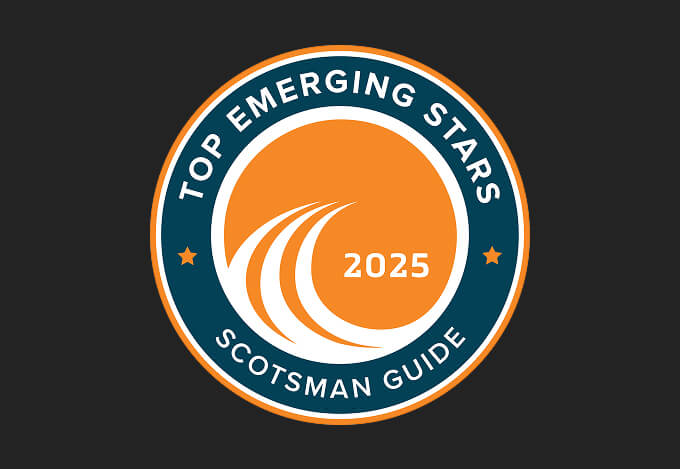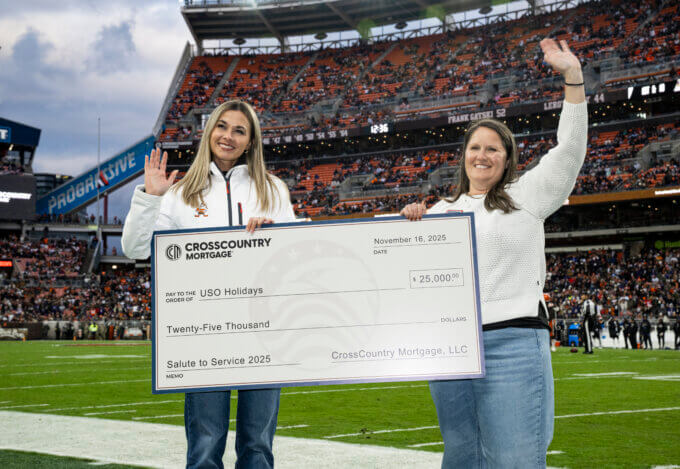Pressroom
Press Releases

CCM Bolsters VA Lending Strength With Arrival of Veteran-Led Team
CrossCountry Mortgage is not only the top retail mortgage lender in the United States, but we are also leading the industry on Scotsman Guide’s Top Emerging Stars List.
Learn More
CCM Leads Industry on Scotsman Guide’s 2025 Top Emerging Stars List
CrossCountry Mortgage is not only the top retail mortgage lender in the United States, but we are also leading the industry on Scotsman Guide’s Top Emerging Stars List.
Learn More
CCM Announces Pricing of Upsized Offering of $600 Million of 6.750% Senior Notes Due 2032
CrossCountry Mortgage celebrates 2024 record-breaking success as #1 retail lender, financing 83,000 homes, and driving mortgage industry innovation.
Learn More
CCM Extends Military Support Through Special Activations
CrossCountry Mortgage honored current and former Military Members throughout Veterans Month with a series of impactful initiatives that celebrate their service and sacrifices.
Learn More
CCM Honoring Projected 2026 Conforming Loan Limits Up to $819,000
CrossCountry Mortgage (CCM), honoring projected 2026 conforming loan limits up to $819,000. Learn more about the Early Bird Program at CCM.
Learn More
CCM Announces Pricing of Upsized Offering of $900 Million of 6.500% Senior Notes Due 2030
CrossCountry Mortgage Commits Over $15 Million in Down Payment Assistance, Helping More than 6,500 First-Time Homebuyers
Learn MoreCCM Continues Expansion of Asset Management Arm
CrossCountry Mortgage Commits Over $15 Million in Down Payment Assistance, Helping More than 6,500 First-Time Homebuyers
Learn More
CCM Leads Scotsman Guide’s Top Veteran Originators List
CCM leads the industry with the most loan officers on Scotsman Guide’s 2025 Top Veteran Originators list, showcasing dedication to serving Military homebuyers.
Learn More
CCM Ranked #1 Retail Mortgage Lender in the Nation for Second Consecutive Year
CrossCountry Mortgage (CCM), is the Nation’s #1 Retail Lender for the second year in a row by both Scotsman Guide’s Top Retail Mortgage Lender list and Mortgage Executive Magazine’s Top 50 Mortgage Companies in America list.
Learn More
CCM Latino Originators Recognized Among Nations Best on NAHREP Top 250 List
Celebrating Latino mortgage originators on the NAHREP Top 250 list, including CrossCountry Mortgage loan officers.
Learn MorePress Kit
-
About CrossCountry Mortgage
CrossCountry Mortgage (CCM) is the nation’s number one distributed retail mortgage lender with more than 7,000 employees operating over 700 branches and servicing loans across all 50 states, D.C. and Puerto Rico. Our company has been recognized ten times on the Inc. 5000 list of America’s fastest-growing private businesses and has received many awards for our standout culture. We offer more than 120 mortgage, refinance and home equity solutions – ranging from conventional and jumbo mortgages to government-insured programs from FHA and programs for Veterans and rural homebuyers – and we are a direct lender and approved seller and servicer by Freddie Mac, Fannie Mae, and Ginnie Mae NMLS #3029. Through our dedication to getting it done, we make every mortgage feel like a win.
-
CrossCountry Mortgage Logos
To maintain the highest level of brand recognition and consistency, please use these approved CCM logos and do not manipulate in any way.
-
Contact Corporate Communications
Natalie Lonjak
Director, Corporate Communications
[email protected]